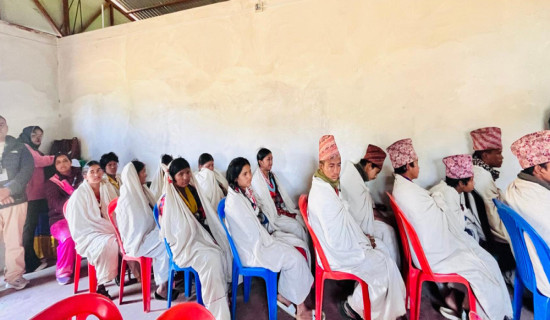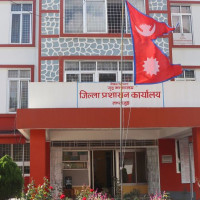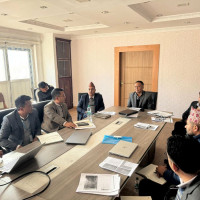- Wednesday, 7 January 2026
Trail Bridges In Nepal: A Success Story
I've worked in the trail bridge industry for almost 20 years and have seen the problems that people suffer when there are no trail bridges over rivers. I began working in the trail bridge sector in the year 2000 AD, and Nepal has achieved great development in trail bridge construction since then. Nepal now exports trail bridge technology to 17 nations.
Over the last few decades, trail bridges have had a tremendous impact on social and economic mobility in Nepal. People no longer have to worry about falling into rivers or injuring themselves while crossing them thanks to trail bridges. As a result, persons who replace dangerous bridges with safer ones have fewer cuts and finger losses.
Improvement
The Nepali government's success in constructing trail bridges has resulted in improvements in other social development indicators. The average two-way travel time to service centres and back to households has been cut by 2.3 hours thanks to trail bridges.
Bridges have become an important part of Nepalese daily life. Trail bridges make it safer and faster to get to markets, agro-vet clinics, administrative offices, schools, and healthcare facilities. Because they no longer have to miss school when the river rises, children are more likely to attend. Pregnant moms can have their health examined, which has resulted in a reduction in infant mortality. Parents are relieved that they no longer have to worry about their children's safety while walking to school and crossing a stream. Farmers can exchange agricultural products at numerous bridge locations where markets have cropped up. People on both sides now have much closer social bonds.
Trail bridges have also contributed to women's increased access to decision-making. We now have examples of women from socially marginalised groups leading bridge-building committees and being elected to represent Palika. Furthermore, trail bridges have become a breeding ground for new development ideas, resulting in improvements in people's social, economic, educational, health, and cultural activities.
Each trail bridge is expected to provide approximately 1.5 million jobs in Nepal each year, or 2,500 person-days of local labour. Similarly, the production of bridge materials at a plant generates thousands of employment each year. The bridge-building programme employs a large number of engineers and social activists.
Toni Hagen, a geologist, travelled 14,000 kilometres through Nepal between 1950 and 1961 and discovered that trail bridges were important in improving connectedness for Nepali people. He was highly worried about Nepal's problems and recognised risky river crossings as the most significant impediment to progress. Hagen seen individuals drowning or being attacked by crocodiles and other water monsters while attempting to cross rivers without bridges. The lack of bridges also hampered people's social and economic options, as they had to wait for the dry season to obtain needs like salt, cattle, and seeds, and had difficulties in organising marriages and socialising.
Nepal was able to build bridges over important route crossings after 1960, but trail bridge construction remained delayed due to resource restrictions. In 1964, the Nepali government formed the Suspension Bridge Division (SBD) to expedite the construction of bridges in Nepal. The Swiss government established the Suspension Bridge Project to aid with bridge construction, while Helvetas Nepal later contributed to bridge development. The Bridge Building at the Local Level (BBLL) programme was founded in 1990, allowing communities to manage trail bridge projects.
Low Cost Bridges
Nepali engineers created low-cost trail bridge standards that anyone with basic engineering knowledge could install. Nepal received financial help from the Swiss government to develop, educate, and hire civil engineering technicians. Humanitarian organisations and individual contributors are also vital to Nepal's efforts to build trail bridges. However, the Swiss population in Nepal has made the greatest contribution to the country's bridge development.
Following that, local communities took the lead in identifying the need for trail bridges and mobilising resources to build them. The Trail Bridge Approach, published in 2006, defined the approach for building bridges. Local governments would use the contracting technique for bridges with spans greater than 120 metres and the community approach for bridges with spans less than 120 metres, according to the policy. As the driving force behind the implementation of bridge construction missions, inclusive bridge user committees were established in an open manner.
Building trail bridges grew easier, less expensive, environmentally friendly, and socially helpful as technology evolved. Nepal has taken a sector-wide strategy to carrying out the trail bridge programme as a top priority project since 2009. Nepal had built a total of 9,669 bridges as of the conclusion of the current fiscal year (2021/22), with 594 erected in the preceding fiscal year. These bridges are utilised by 17 million people, and Nepal is on course to build its 10,000th river bridge this year. There are still many trail bridges that need to be built, and Nepal must spend money collectively to rehabilitate already-made trail bridges for their safety.
The Nepali government is changing its policies to assure connectivity within an hour's detour, and trail bridges should be located where they can provide the most substantial societal benefits with the fewest costs. The bridges are designed to lower the risk of poor people commuting from remote areas.
Prior to 1964/65, development operations in Nepal were uncommon. During the Rana era, trail bridge development was slowed, and historically, only one or two bridges were erected utilising bridge components fabricated in Scotland. These bridges were mostly located on major thoroughfares and had little impact on people's lives. In 1964, the government established the Suspension Bridge Division (SBD) to meet the need for local paths. Despite the enthusiastic response to SBD's efforts, the project was unable to supply trail bridges to the public on a broad scale, and poorly functional bridges were built. As a result, the government realised the need in 1990 to build a new strategy to trail bridge construction that centred on local community participation and leadership, resulting in the formation of Bridge Building at the Local Level (BBLL). The Swiss government provided assistance to Helvetas Nepal in the implementation of the BBLL community trail bridge initiative.
Standardised Norms
Municipal, provincial, and federal governments have built trail bridges in recent years using standardised norms, standards, and practises. Trail bridge priorities and implementation methodologies are established by national and provincial trail bridge strategies. The involvement of the private sector in trail bridge construction has showed promise. The program's driving force is emerging as consulting firms and non-governmental organisations. High-quality bridge parts can be obtained from fabricators in major cities, and cement for trail bridge construction can be obtained from cement manufacturing plants. Private construction companies can construct longer-span trail bridges. Bridge maintenance committees are frequently in charge of their local bridges.
Nepal has had success in exporting bridge-building technologies, and Nepali specialists have helped build hundreds of trail bridges throughout Africa, Latin America, and Asia. Engineers from numerous nations have attended classes in Nepal, and Nepal has supplied bridge components for some of the aforementioned bridges. This reflects Nepal's knowledge, experience, and inventiveness in trail bridge technology, and the Nepali people are proud of their country's trail bridge achievements.
However, upkeep is still an issue in trail bridge building. Although having so many bridges is a source of pride for a small country like Nepal, maintaining such a big number of trail bridges is a costly burden on all levels of government. People and politicians' top goal is to build new bridges, and as a result, bridge safety is deteriorating on a daily basis, making future accidents unavoidable.
Despite the fact that Nepal has a large human resource base and exports trail bridge technology, the reality is quite different. Because trial bridges are less important for a career, there is a scarcity of qualified engineers on the market. Furthermore, several non-governmental organisations involved in trail bridge construction must improve their governance. Trial bridges are given less consideration by planners than other types of physical infrastructure. Under the trail bridge plan, Palikas and NGOs will need years to become self-sufficient, but they are hesitant to accept this fact. Some of the difficulties identified above could be addressed by an updated provincial trail bridge strategy. Palikas' evidence-based policymaking, on the other hand, is critical.
(Dahal writes about development topics such as song and music.)









-original-thumb.jpg)







